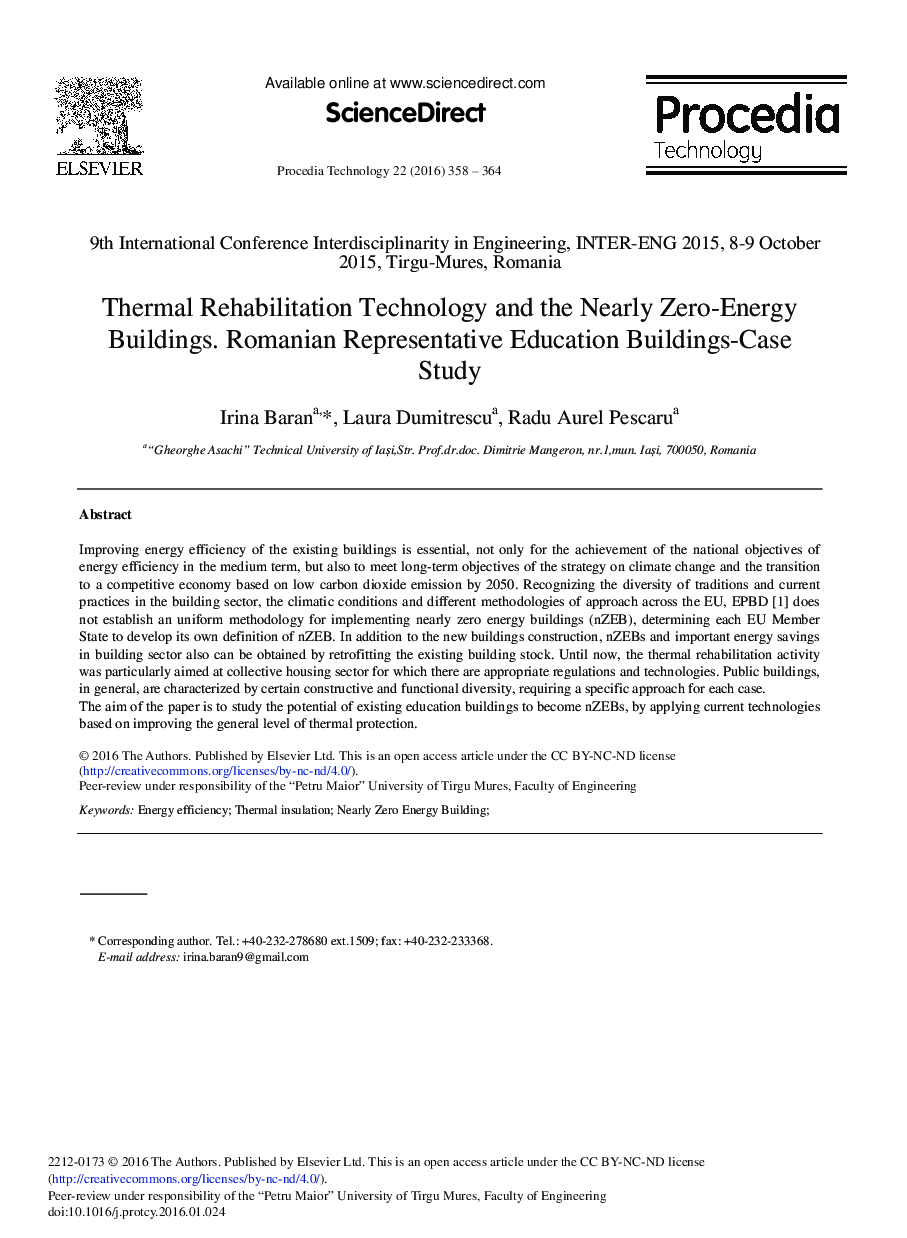| Article ID | Journal | Published Year | Pages | File Type |
|---|---|---|---|---|
| 490771 | Procedia Technology | 2016 | 7 Pages |
Improving energy efficiency of the existing buildings is essential, not only for the achievement of the national objectives of energy efficiency in the medium term, but also to meet long-term objectives of the strategy on climate change and the transition to a competitive economy based on low carbon dioxide emission by 2050. Recognizing the diversity of traditions and current practices in the building sector, the climatic conditions and different methodologies of approach across the EU, EPBD [1] does not establish an uniform methodology for implementing nearly zero energy buildings (nZEB), determining each EU Member State to develop its own definition of nZEB. In addition to the new buildings construction, nZEBs and important energy savings in building sector also can be obtained by retrofitting the existing building stock. Until now, the thermal rehabilitation activity was particularly aimed at collective housing sector for which there are appropriate regulations and technologies. Public buildings, in general, are characterized by certain constructive and functional diversity, requiring a specific approach for each case.The aim of the paper is to study the potential of existing education buildings to become nZEBs, by applying current technologies based on improving the general level of thermal protection.
